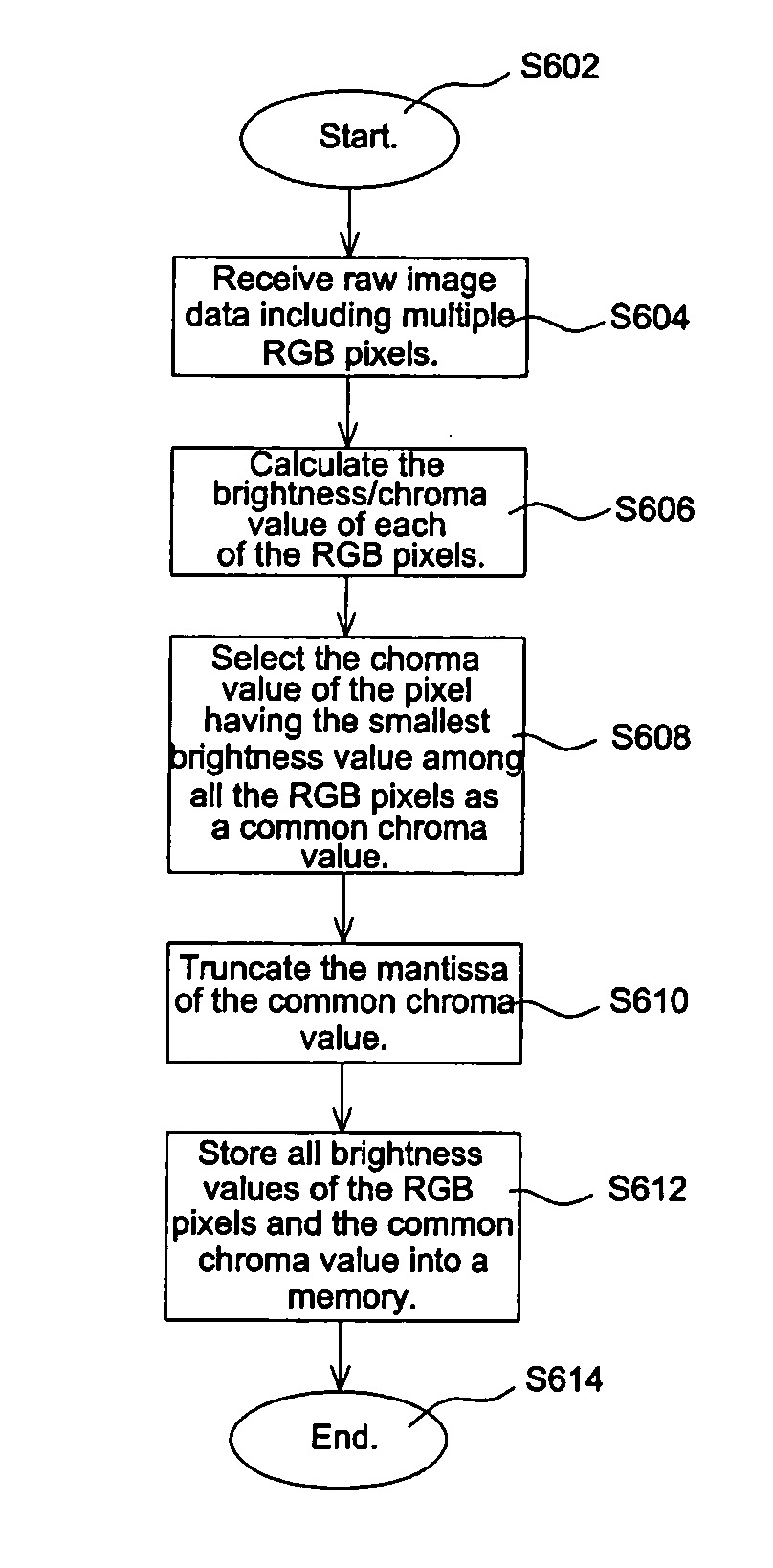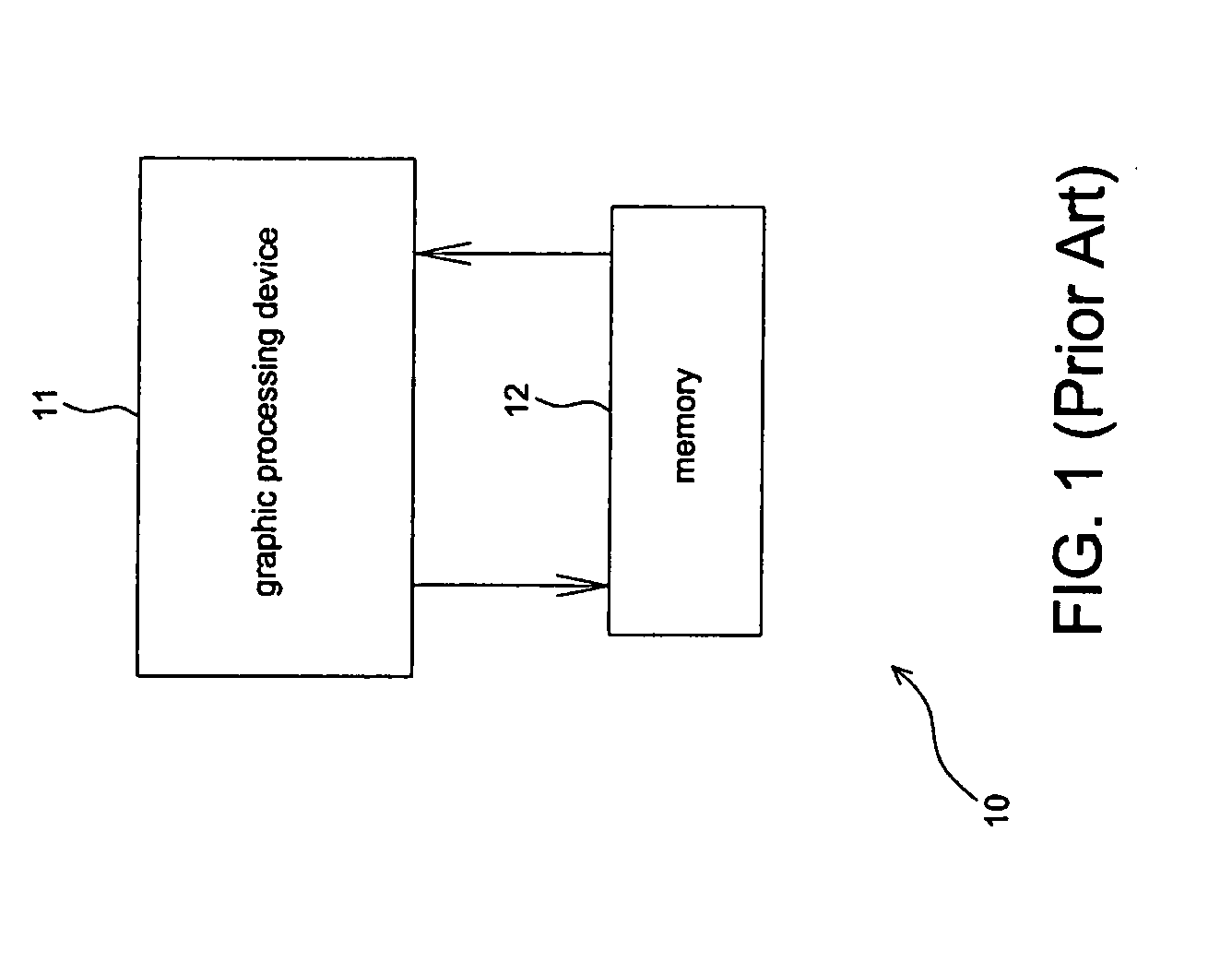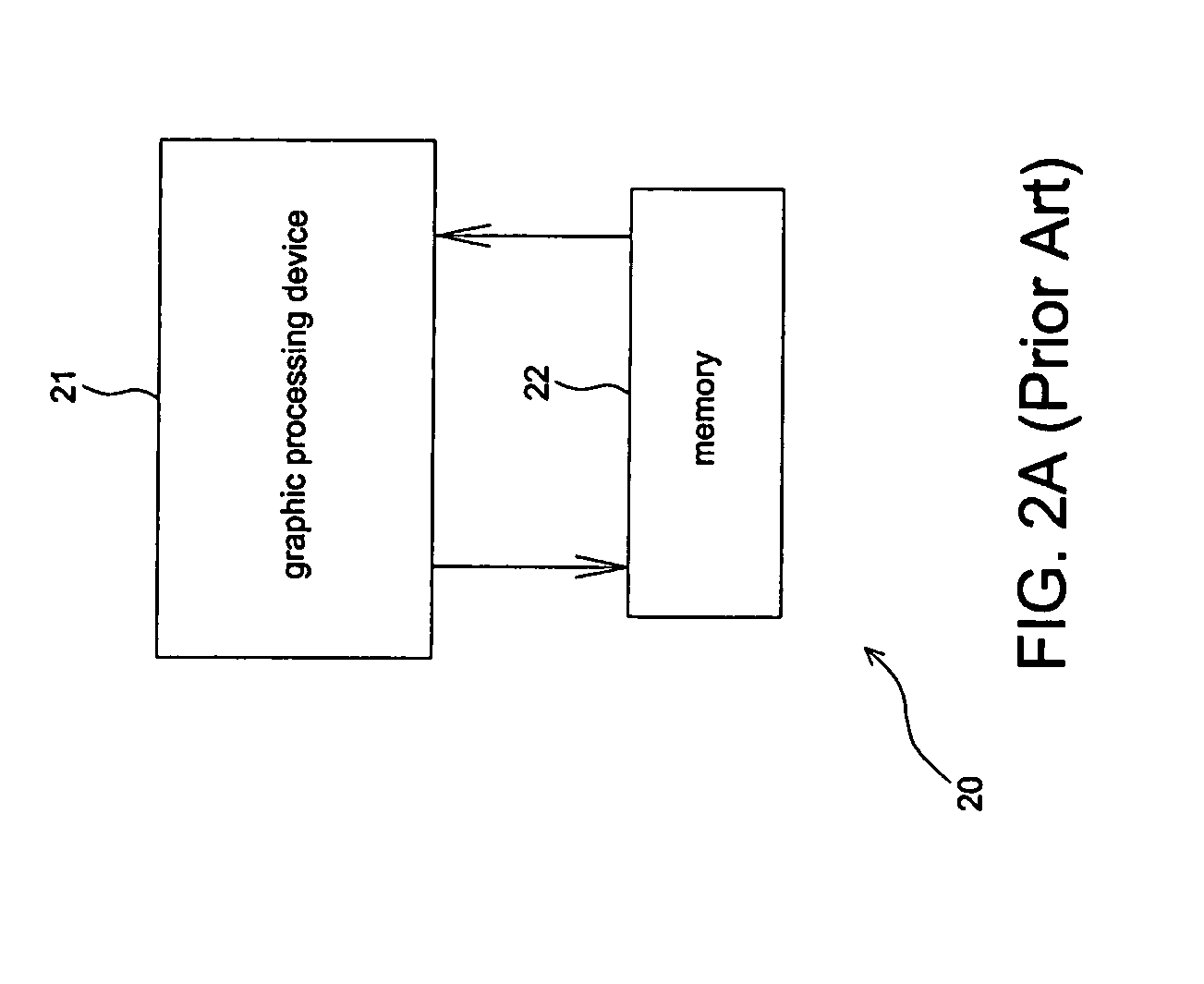Device and method for image compression and decompression
a technology of applied in the field of devices and methods for image compression and decompression, can solve the problems of lowering processing speed, increasing occupied memory space, etc., and achieving the effect of reducing data amount and occupied memory spa
- Summary
- Abstract
- Description
- Claims
- Application Information
AI Technical Summary
Benefits of technology
Problems solved by technology
Method used
Image
Examples
Embodiment Construction
[0031]FIG. 3A shows a block diagram illustrating a 3D graphic system according to the invention. Referring to FIG. 3A, the 3D graphic system 30 includes a graphic processing device 31 and a memory 22. The graphic processing device 31 includes a floating-point graphic compressor 311 and a floating-point graphic decompressor 312. A RGB / YCrCb conversion for processing pixels represented as floating-point number is being applied to the graphic processing device 31.
[0032] Typically, the human eye may perceive tiny variations in brightness, but not so in chroma. Thus, according to the invention, a common chroma value Cr′Cb′ may replace all chroma values Cr1Cb1-CrNCbN (N is a positive integer) during a floating-point graphic procession to considerably reduce data amount.
[0033]FIG. 3B shows a block diagram illustrating the floating-point graphic compressor 311 shown in FIG. 3A. The graphic compressor 311 includes a floating-point texture-loading unit 311a, a shader 311b, a RGB to YCrCb co...
PUM
 Login to View More
Login to View More Abstract
Description
Claims
Application Information
 Login to View More
Login to View More - R&D
- Intellectual Property
- Life Sciences
- Materials
- Tech Scout
- Unparalleled Data Quality
- Higher Quality Content
- 60% Fewer Hallucinations
Browse by: Latest US Patents, China's latest patents, Technical Efficacy Thesaurus, Application Domain, Technology Topic, Popular Technical Reports.
© 2025 PatSnap. All rights reserved.Legal|Privacy policy|Modern Slavery Act Transparency Statement|Sitemap|About US| Contact US: help@patsnap.com



